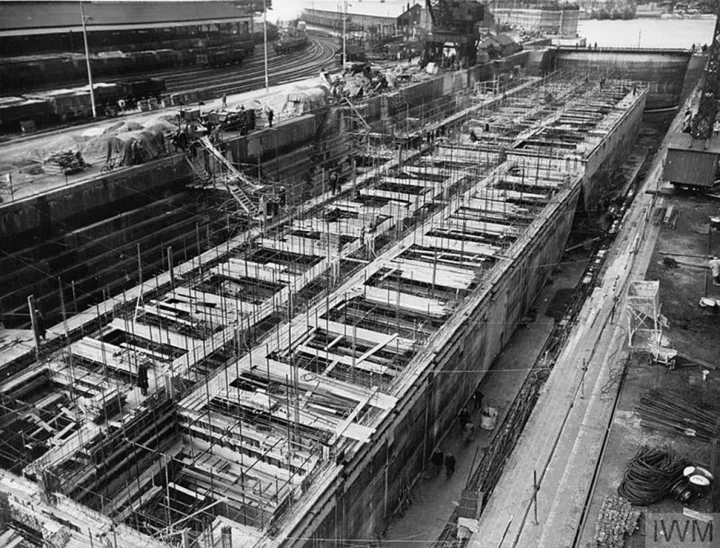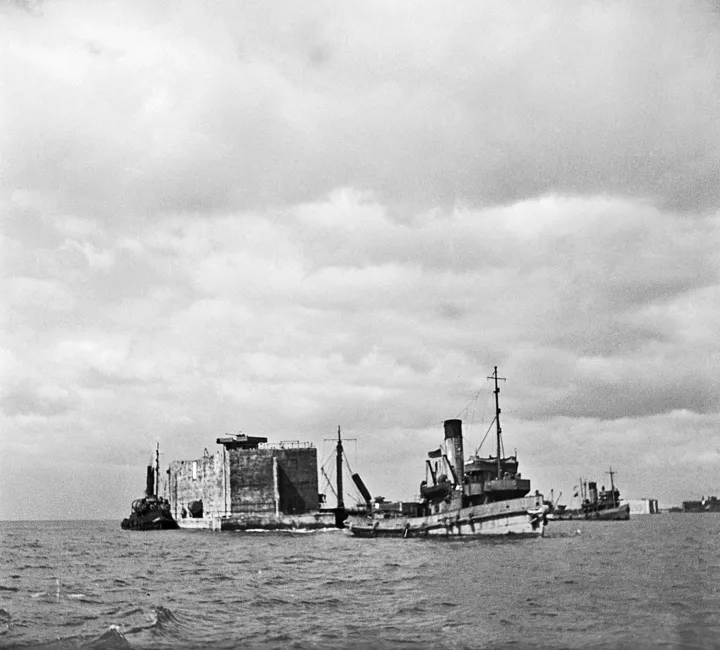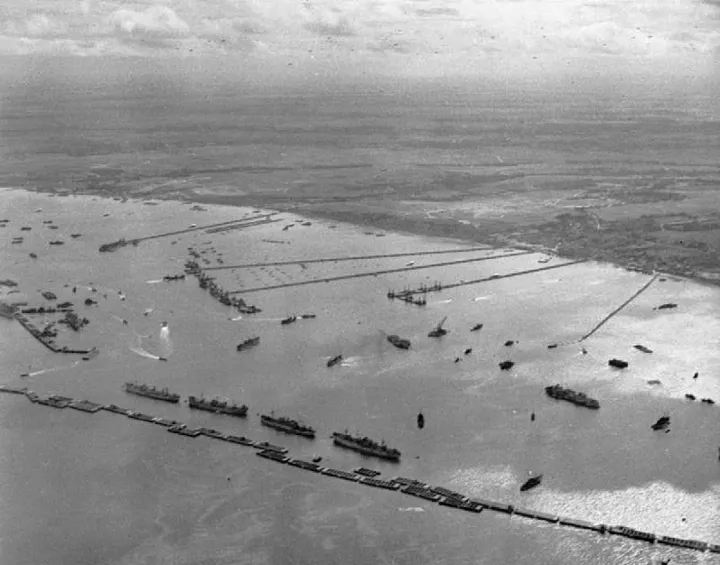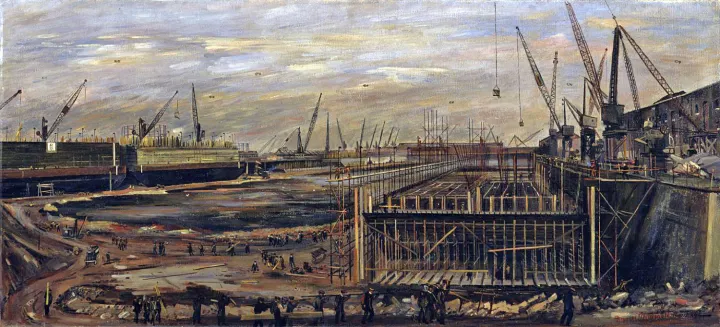History Shorts 41 – The Mulberry harbours








Audlem and District History Society
The History Society welcomes contributions to the History Shorts series. For an introduction and contact details, please go to click her
History Shorts 41 by Alan Paterson
The Mulberry harbours
My father went up to Bristol University in September 1939 just as war in Europe was declared. He was to study civil engineering there for the next three years.
Upon graduation he was called up and joined the Royal Engineers which led to him being part of the Normandy landings when the Mulberry harbours were set up immediately following D-Day.
This was a civil engineering project of immense size and complexity that had been several years in the planning and development. These floating harbours, each the size of Dover, provided port facilities for all the allied troops, supplies and equipment from June 1944 until other ports such as Cherbourg were captured.
How did they manage to do this in just a few days when it had taken seven years to build Dover?
The answer is that they built them in Britain over a period of many months, hid them until they were ready, towed them across the Channel and then installed them on the French coast

Picture 1: Two caissons under construction at George V graving dock in Southampton. A third, already launched, is visible in the water beyond.

Picture 2:Tugs towing several caissons across the Channel.
The Mulberry harbours consisted of several parts. The harbour walls were created from floating concrete 'caissons' that could be sunk at the correct location.
These caissons created sheltered water in a harbour of about five square kilometres and a depth of nearly seven metres to enable vessels to dock at one of several floating piers which were used to transport the materiel from ships to shore.
There were 146 caissons each 60 metres long, 18 metres high and 15 metres wide, making up 9.5 kilometres of the breakwater

Picture 3:Aerial view of the Mulberry B artificial harbour at Arromanches, Normandy, September 1944. The concrete caissons that form the outer breakwater are in the foreground.
They were airtight, floating cases open at the bottom with air-cocks in the top to lower them to the seabed in a controlled fashion. Around two million tons of steel and concrete were used in their construction.
The scale of the project was enormous and was in danger of over-stretching the capacity of the UK's civil engineering industry.
From late summer of 1943 onwards, three hundred firms were recruited from around the country, employing 40,000 to 45,000 personnel at the peak. Men from trades and backgrounds not associated with the construction industry were drafted in and given crash courses appropriate to their work.
Mulberry B was in use for five months, during which time over two million men, half a million vehicles and four million tons of supplies passed through the harbour.
My father spent his entire working life in concrete, having joined Sir Robert McAlpine, the civil engineering company, after the war. He eventually became Chief Civil Engineer and worked on a number of other massive concrete structures in a career that arguably spanned the most interesting and diverse period in concrete's history.
If you are interested to discover more about the history of the Mulberry harbours, I recommend this web site:- www.combinedops.com/Mulberry%20Harbours.htm

Photograph attributions
All photographs are from the Imperial War Museum archive © IWM and are reproduced here under their non-commercial licence. (Refs: A 25792, H 39300 and BU1020)
Get In Touch
AudlemOnline is powered by our active community.
Please send us your news and views using the button below:
Email: editor@audlem.org




